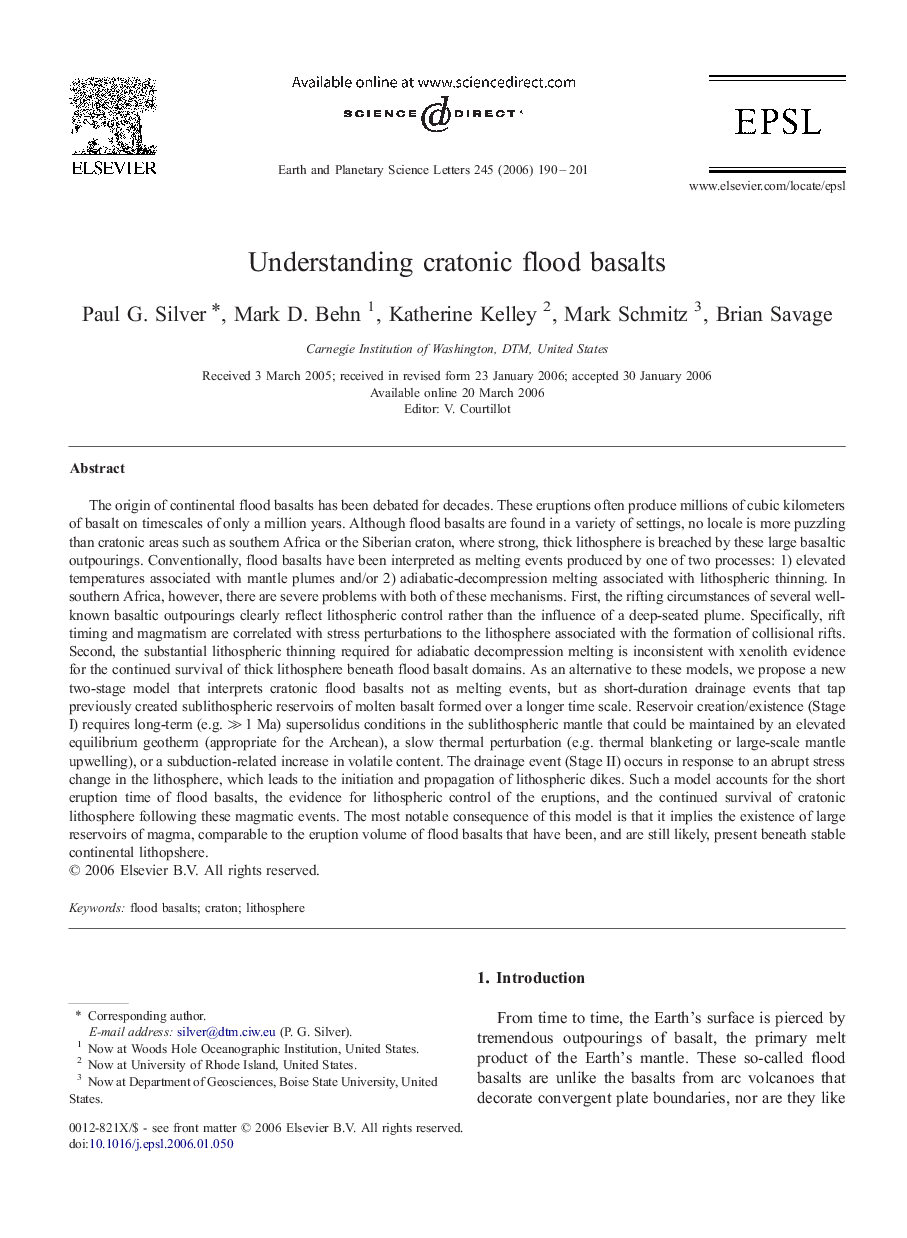| کد مقاله | کد نشریه | سال انتشار | مقاله انگلیسی | نسخه تمام متن |
|---|---|---|---|---|
| 4681105 | 1634945 | 2006 | 12 صفحه PDF | دانلود رایگان |

The origin of continental flood basalts has been debated for decades. These eruptions often produce millions of cubic kilometers of basalt on timescales of only a million years. Although flood basalts are found in a variety of settings, no locale is more puzzling than cratonic areas such as southern Africa or the Siberian craton, where strong, thick lithosphere is breached by these large basaltic outpourings. Conventionally, flood basalts have been interpreted as melting events produced by one of two processes: 1) elevated temperatures associated with mantle plumes and/or 2) adiabatic-decompression melting associated with lithospheric thinning. In southern Africa, however, there are severe problems with both of these mechanisms. First, the rifting circumstances of several well-known basaltic outpourings clearly reflect lithospheric control rather than the influence of a deep-seated plume. Specifically, rift timing and magmatism are correlated with stress perturbations to the lithosphere associated with the formation of collisional rifts. Second, the substantial lithospheric thinning required for adiabatic decompression melting is inconsistent with xenolith evidence for the continued survival of thick lithosphere beneath flood basalt domains. As an alternative to these models, we propose a new two-stage model that interprets cratonic flood basalts not as melting events, but as short-duration drainage events that tap previously created sublithospheric reservoirs of molten basalt formed over a longer time scale. Reservoir creation/existence (Stage I) requires long-term (e.g. ≫ 1 Ma) supersolidus conditions in the sublithospheric mantle that could be maintained by an elevated equilibrium geotherm (appropriate for the Archean), a slow thermal perturbation (e.g. thermal blanketing or large-scale mantle upwelling), or a subduction-related increase in volatile content. The drainage event (Stage II) occurs in response to an abrupt stress change in the lithosphere, which leads to the initiation and propagation of lithospheric dikes. Such a model accounts for the short eruption time of flood basalts, the evidence for lithospheric control of the eruptions, and the continued survival of cratonic lithosphere following these magmatic events. The most notable consequence of this model is that it implies the existence of large reservoirs of magma, comparable to the eruption volume of flood basalts that have been, and are still likely, present beneath stable continental lithopshere.
Journal: Earth and Planetary Science Letters - Volume 245, Issues 1–2, 15 May 2006, Pages 190–201